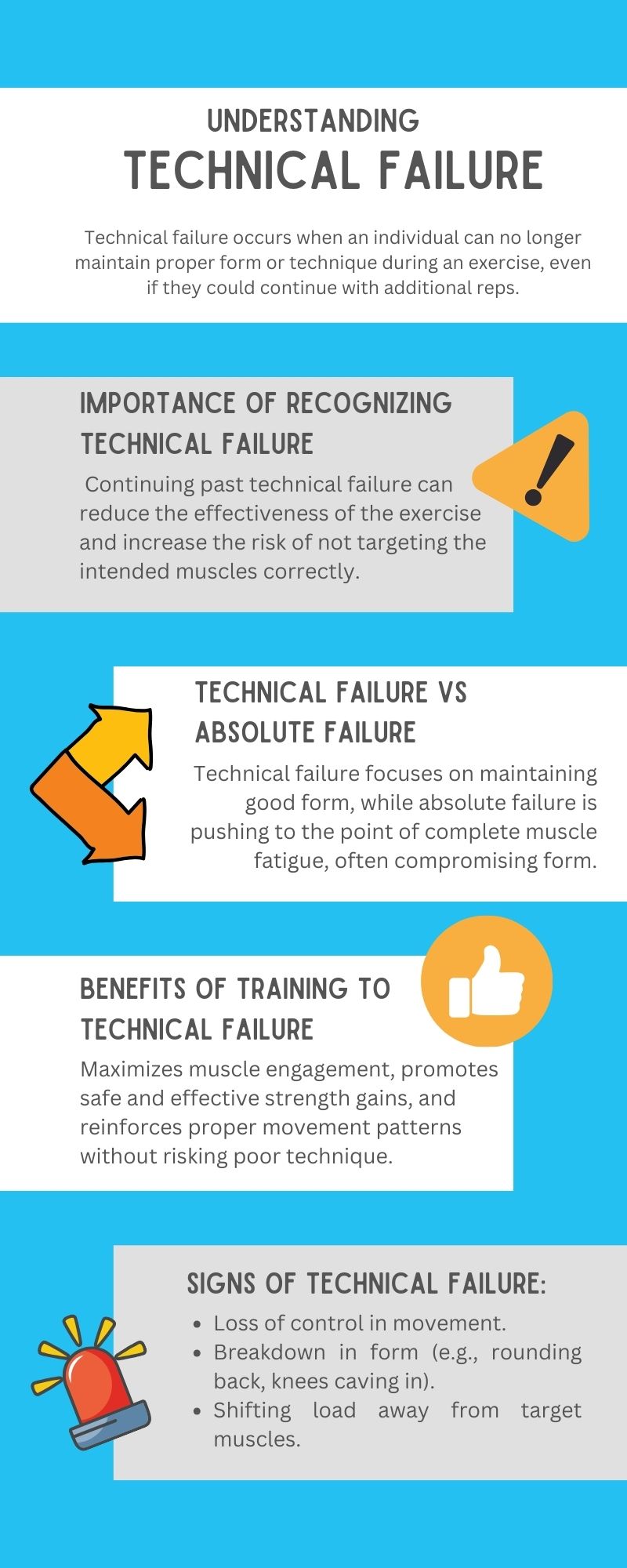Understanding Technical Failure: The Key to Safe and Effective Workouts
When it comes to strength training, we often hear about pushing to “failure” to maximize gains. But here’s the thing—there’s more than one type of failure in the gym, and understanding the difference can mean the difference between progress and plateau, or worse, injury. Enter technical failure: the point in an exercise where your form starts to break down, even if you still have some strength left in the tank.
Let’s unpack what technical failure is and why it’s crucial to know your limits when it comes to maintaining proper exercise technique.

What Is Technical Failure?
Technical failure refers to the point during an exercise when you can no longer maintain proper form or technique. It’s not about the muscle being completely fatigued to the point where you can’t do another rep—it’s about the quality of your movement starting to deteriorate. When you reach technical failure, you’re done, even if you feel like you could squeeze out a few more reps.
Imagine doing a set of deadlifts. You’ve got great form for the first few reps: relatively neutral spine, hips hinged properly, bar path straight. But then, on that next rep, your back starts to round, or you start yanking the bar instead of lifting with control. That’s technical failure. You might feel like you could keep going, but each rep beyond this point is a gamble with your safety and effectiveness.
Why Technical Failure Matters
Reaching technical failure is a natural part of strength training, but it’s important to recognize when you’ve hit it. Continuing past technical failure means sacrificing form, which not only increases your potential risk of injury but also reduces the effectiveness of the exercise. Poor form can shift the load away from the target muscles, meaning you’re not getting the full benefit of the exercise you’re performing.
Training to Technical Failure vs. Absolute Failure
There’s a time and place for pushing to absolute failure (when your muscles are completely exhausted and you can’t perform another rep with any semblance of good form). However, for most exercises, especially compound movements like squats, deadlifts, and bench presses, training to technical failure is the smarter, safer option.
Training to technical failure allows you to maximize muscle engagement and strength gains without compromising your form. This approach ensures that every rep is of high quality, targeting the right muscles and reinforcing proper movement patterns. It’s about working smarter, not just harder.
How to Recognize Technical Failure
Pay attention to your body and the quality of each rep. Signs of technical failure might include:
- Loss of control (the movement becomes jerky or less controlled.)
- Form breakdown (rounding of the back, knees caving in, or elbows flaring out.)
- Shifting load (transferring weight to different muscles or joints to compensate)
If you notice any of these signs, it’s time to rack the weights and call it a set. Focus on quality over quantity.
The Bottom Line: Train Smart, Train Safe
Understanding and respecting technical failure is key to effective and safe strength training. It’s not just about how much weight you lift or how many reps you complete; it’s about how well you perform each movement. By training to technical failure, you can push yourself while minimizing the risk of injury and ensuring that you’re truly building strength and muscle where it counts.
So next time you hit the gym, keep an eye on your form and know your limits. Remember, progress isn’t just about doing more—it’s about doing better. Lift smart, lift safe, and keep building towards a stronger you.
